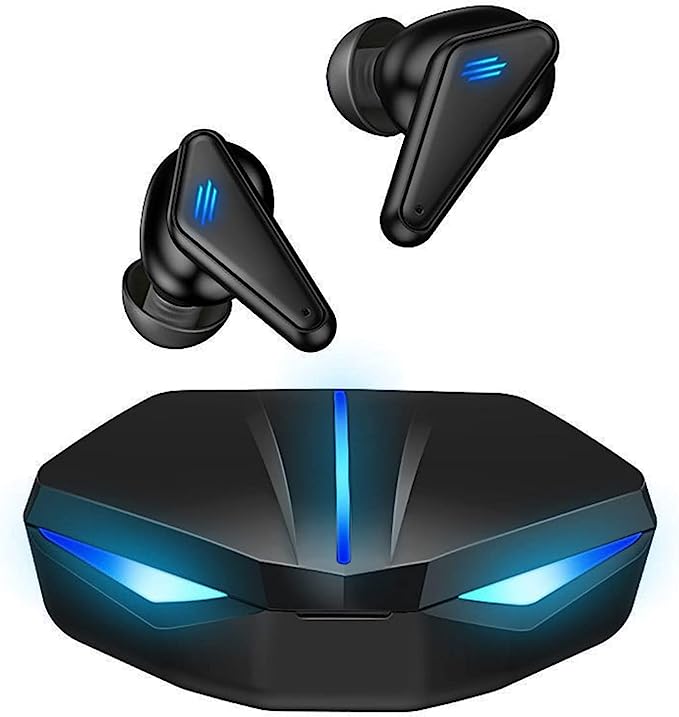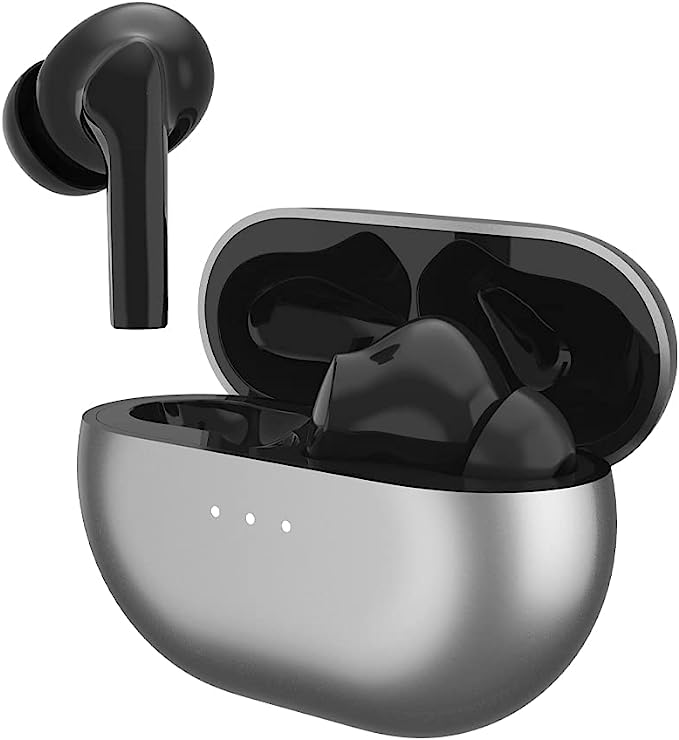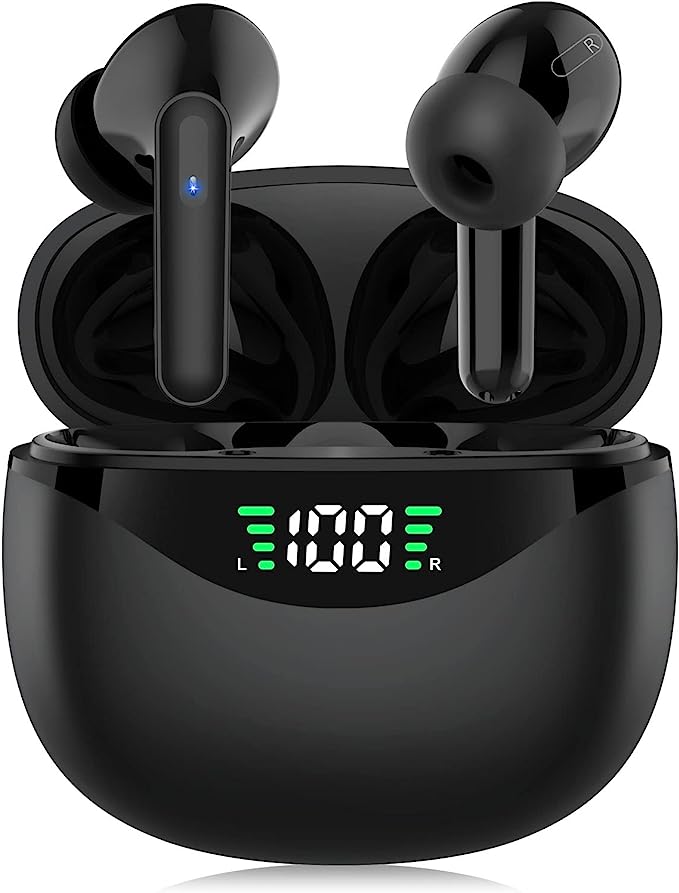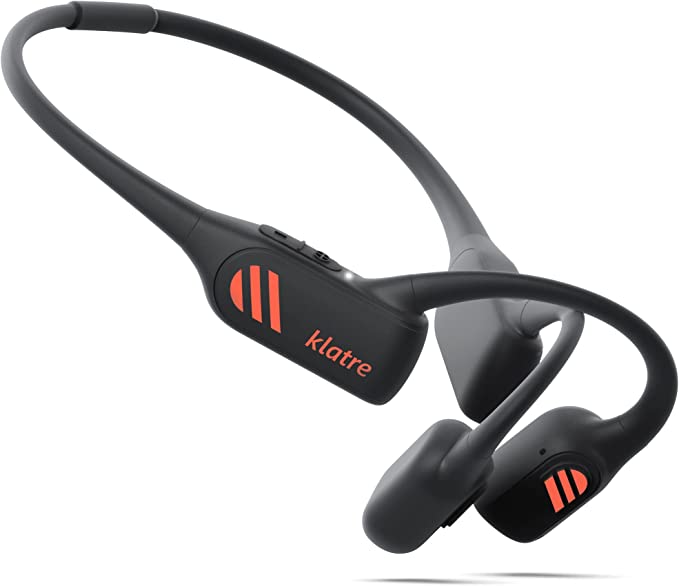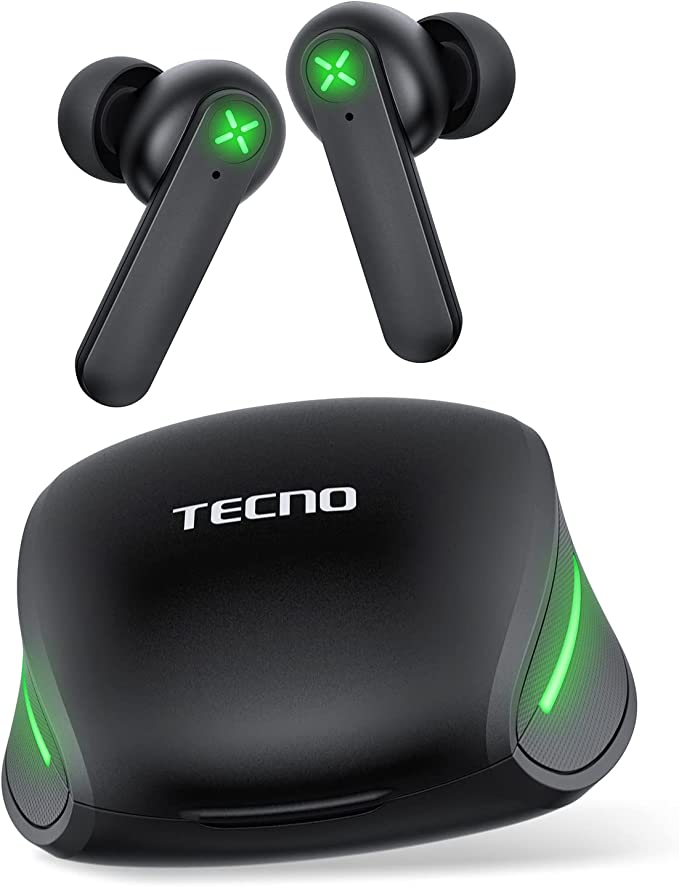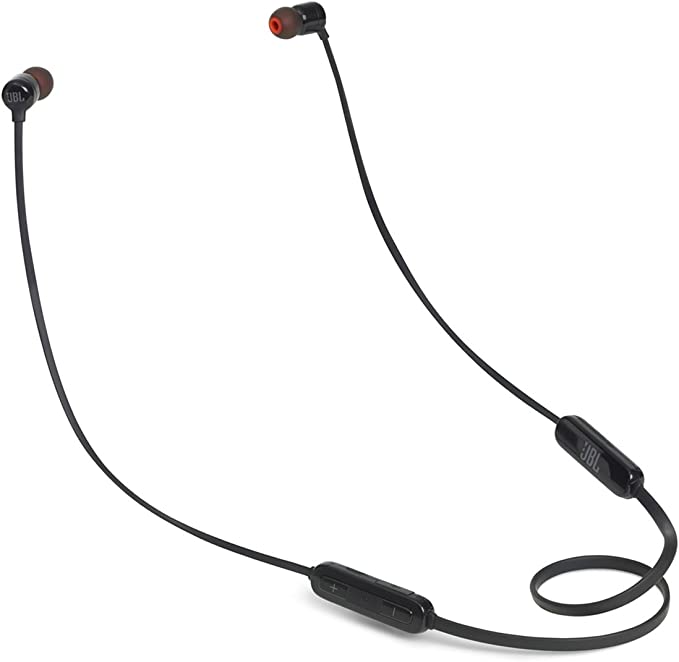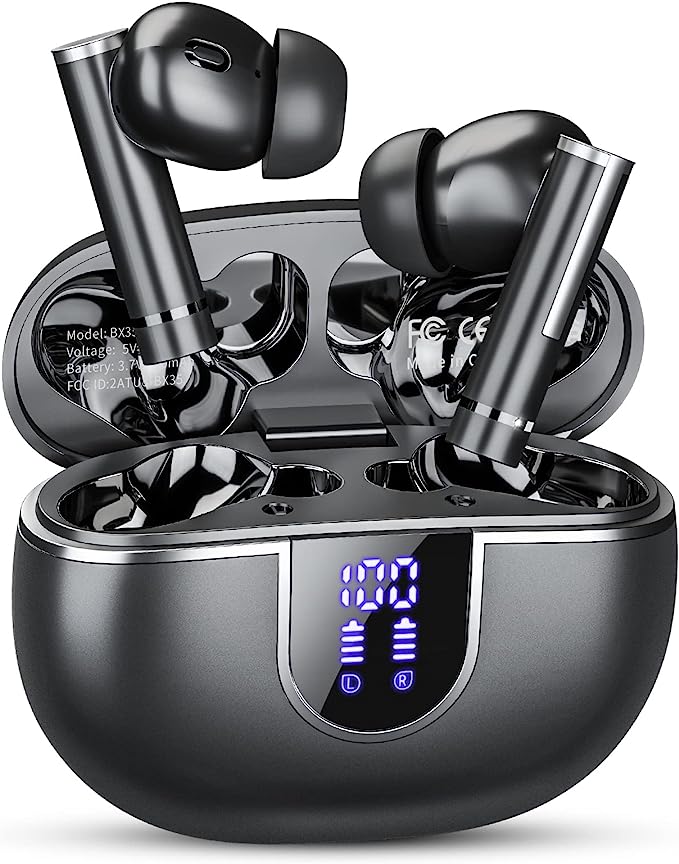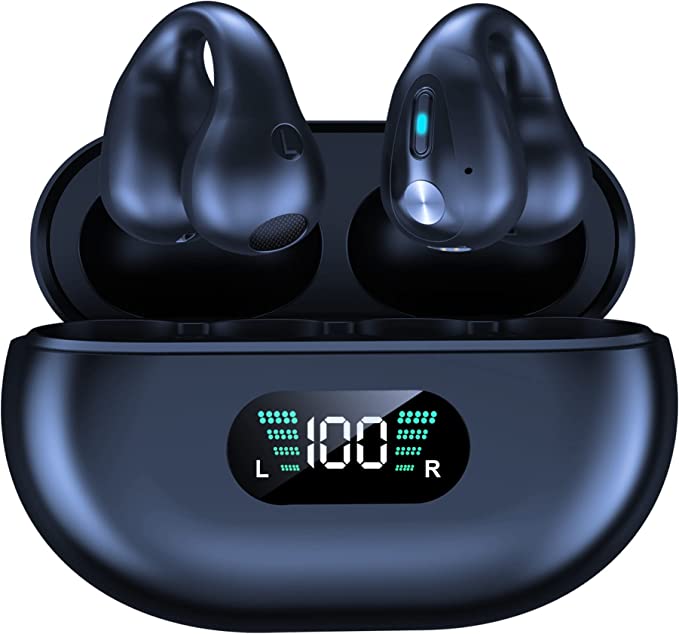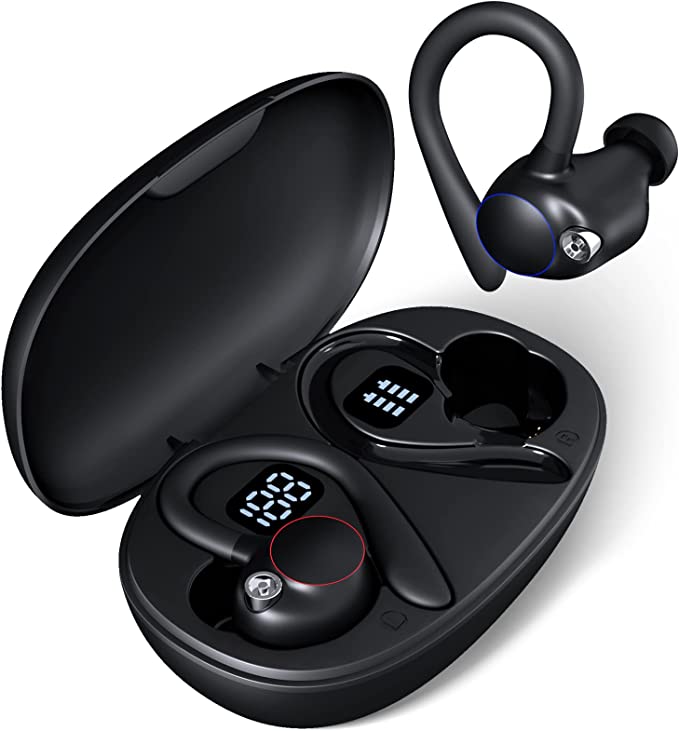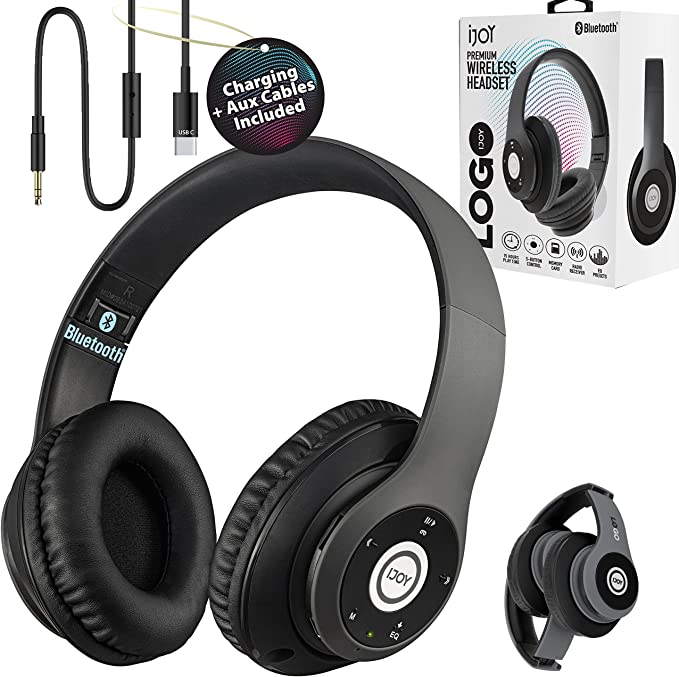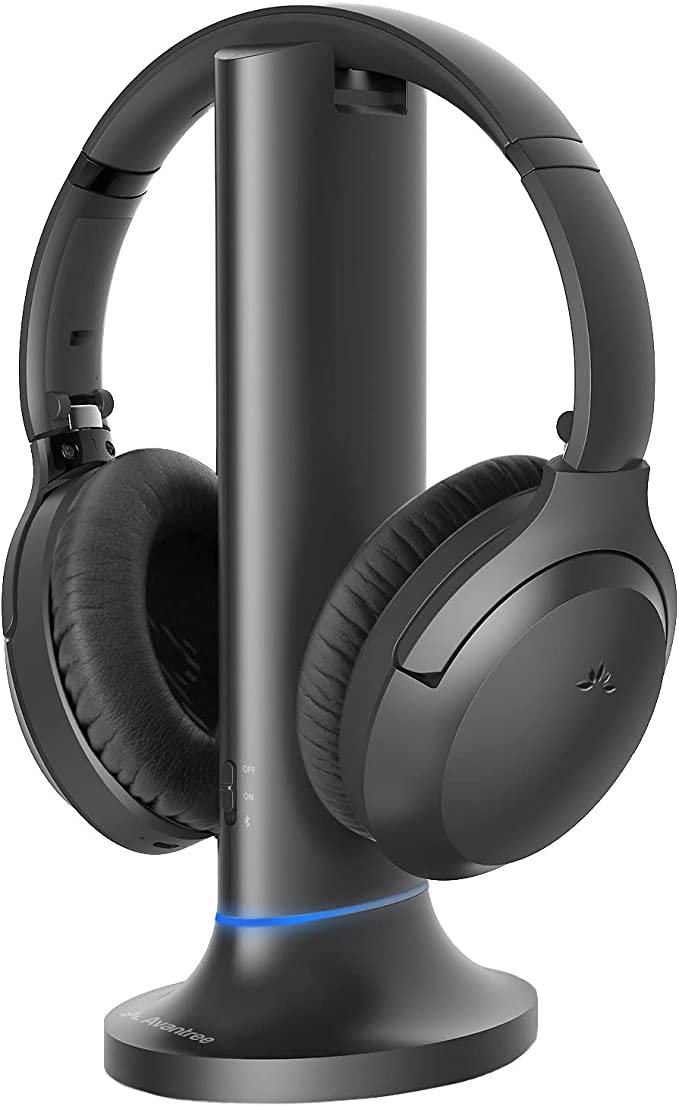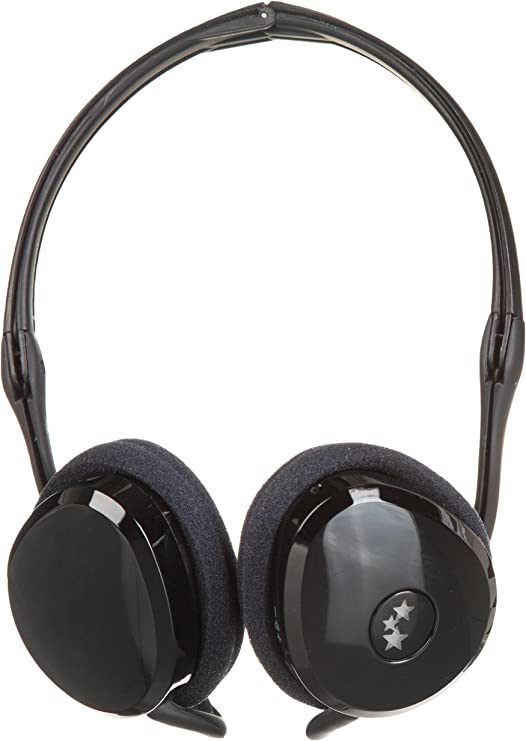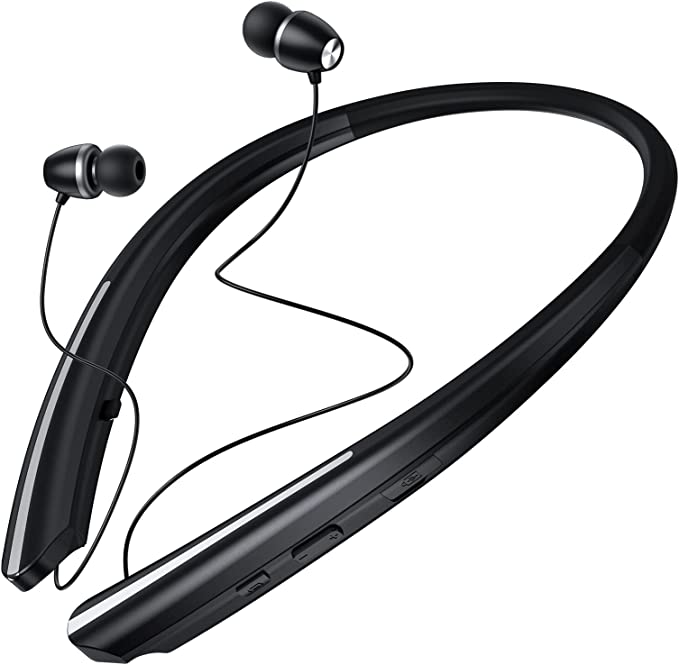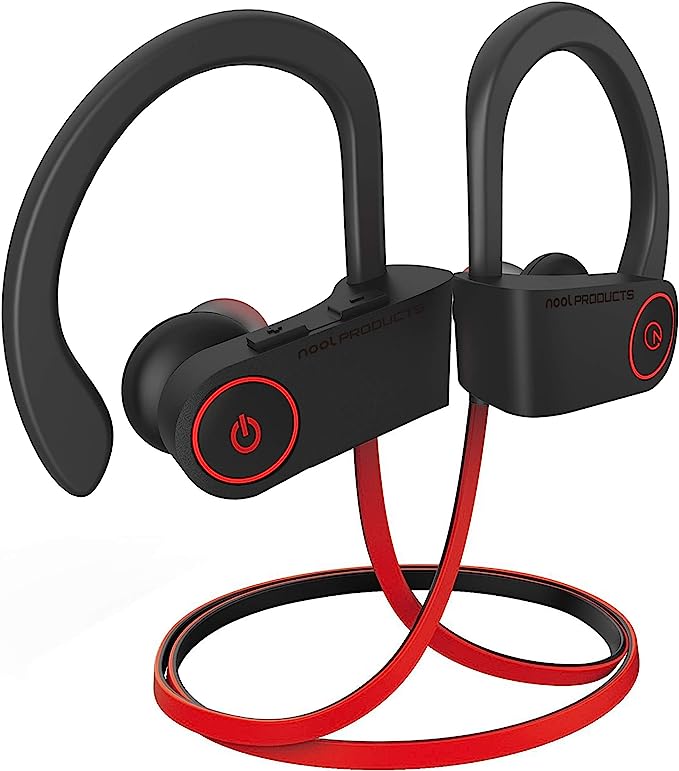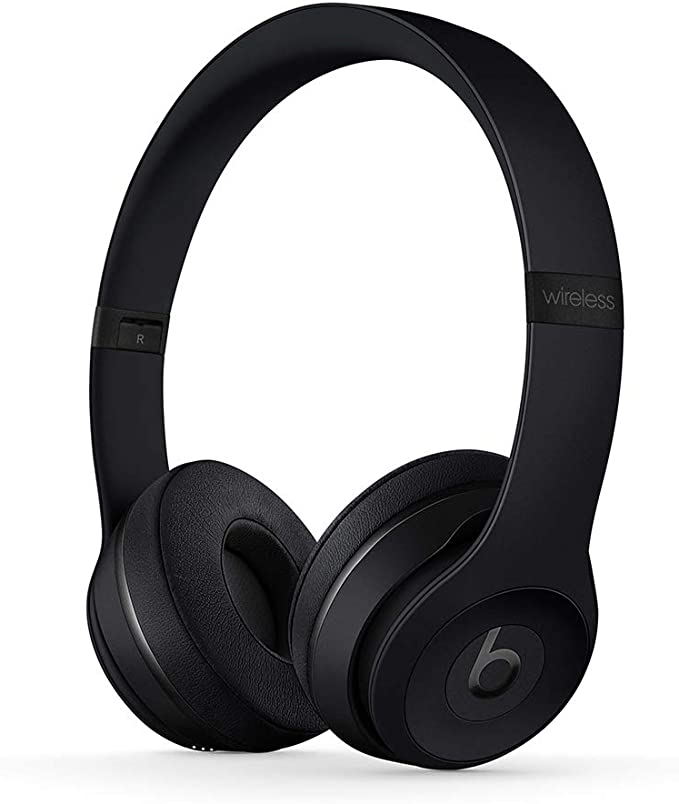GIEC CandyPods Wireless Earbuds: The Science of Sound, Connectivity, and Convenience on a Budget
Update on May 30, 2025, 1:33 p.m.
In our bustling world, we often seek refuge in our personal soundscapes – a favorite playlist escorting us on the morning commute, a captivating podcast unraveling during a lunch break, or the immersive audio of a late-night gaming session. Wireless earbuds have become our pocket-sized portals to these auditory worlds, and it’s fascinating how these tiny devices, increasingly affordable, are brimming with sophisticated technology. Today, we’ll embark on a scientific journey, “lifting the hood” on a specific example, the GIEC CandyPods Wireless Earbuds, to understand the “how” and “why” behind their features. This exploration isn’t just about one product; it’s about empowering you, the listener, with the knowledge to appreciate the symphony of science playing in your ears every day. GIEC, a company established back in 1999, has been in the audio-visual space for a while, and their CandyPods offer a great case study for the democratization of audio technology.

The Unseen Handshake: Decoding Bluetooth 5.3’s Wireless Waltz
At the heart of any wireless earbud is Bluetooth, that invisible handshake that tethers your audio source to your ears. Think of it as a personal, short-range radio station broadcasting just for you. The GIEC CandyPods come equipped with Bluetooth 5.3, a relatively recent iteration of this ubiquitous standard. But what does “5.3” truly mean for your daily listening experience, beyond just a higher number?
The “5.3” upgrade promises several enhancements, crucial for uninterrupted audio enjoyment. The CandyPods’ specifications claim a connection that is “90% more stable than Bluetooth 5.0” and offers “2 times the transmission rate.” While specific testing conditions for such claims are rarely detailed by manufacturers, newer Bluetooth versions, in general, incorporate more advanced algorithms for things like “channel sounding” and “periodic advertising enhancement.” In simpler terms, Bluetooth 5.3 is designed to be smarter at navigating crowded radio environments – like a busy café teeming with wireless signals – by more effectively finding and maintaining clearer communication pathways. This translates to fewer annoying dropouts and a more consistent stream of music or conversation.
A significant leap, especially for gamers and video enthusiasts, is the pursuit of low latency. Latency is the perceptible delay between an action on screen and the corresponding sound reaching your ears. Imagine watching a movie where the dialogue is just a fraction of a second out of sync with the actors’ lips – it’s incredibly distracting. The CandyPods boast a “Game mode with ultra-low latency technology,” further specified in their product description as achieving “60ms Ultra-Low Latency.” To put 60 milliseconds (ms) into perspective, a human blink takes about 100 to 400ms. So, a 60ms delay is swift enough that for most people, the audio and video will appear perfectly synchronized, making for a much more immersive experience. This is achieved not just by Bluetooth 5.3’s inherent improvements (like LE Isochronous Channels, though support varies by device), but often through dedicated modes that might prioritize speed over other factors for short bursts.
Furthermore, a silent hero in the Bluetooth saga is its Low Energy (LE) aspect. While not always a headline feature, the efficiency gains in Bluetooth LE, refined over successive versions, play a crucial role in enabling these tiny earbuds to last for hours on a single charge – a feat we’ll revisit later.

Sculpting Your Audio Universe: Drivers, Sound, and Silence
Once the wireless connection is established, the magic of sound reproduction and environmental management takes center stage. This is where the physical components within the earbuds, and the clever processing they employ, truly shine.
The Maestro Within – The 13mm Dynamic Driver
The component responsible for actually creating the sound you hear is called a driver, and the GIEC CandyPods feature 13mm large-size dynamic drivers. Think of a dynamic driver as a miniature, high-precision loudspeaker. At its core, it operates on a fundamental principle of electromagnetism: an electrical audio signal flows through a finely wound “voice coil” attached to a thin, flexible membrane called a “diaphragm.” This coil is suspended within a permanent magnetic field. As the electrical signal undulates, it creates a fluctuating magnetic force, causing the coil and the attached diaphragm to vibrate rapidly – much like a tiny, incredibly fast drum skin. These vibrations push and pull the air, creating pressure waves that our ears interpret as sound. The “13mm large-size” specification generally does matter; a larger diaphragm has a greater surface area, allowing it to move a larger volume of air with each vibration. This capability is particularly influential in reproducing lower frequencies, or bass, which is why the CandyPods can claim to deliver a “full experience of your music, from booming bass to a rich midrange to crystal-clear treble.” While driver size is just one piece of the acoustic puzzle (as enclosure design, materials, and tuning also play vital roles), a larger driver provides a solid foundation for a fuller, more impactful sound.
The CandyPods also mention a “Music mode with GIEC EQ system in each earbud for more natural authentic sound quality.” EQ, or equalization, is like having a sophisticated set of tone controls for your audio. It allows manufacturers to fine-tune the frequency response of the earbuds, “perhaps boosting the bass a bit, or adding a little sparkle to the highs, to achieve a desired sound signature. While the specifics of the “GIEC EQ system” are proprietary and not detailed, the presence of an EQ system indicates an effort to sculpt the sound beyond the raw output of the drivers.

The Art of Quietude – Environmental Noise Cancellation (ENC) and the 35dB Promise
In our often-cacophonous world, the ability to hush the hubbub and focus on our audio is a prized feature. The GIEC CandyPods offer “Environmental Noise Cancelling technology” that they state can “achieve up to 35dB noise cancelling effect.” This is a notable feature for earbuds in this accessible price range.
It’s useful to understand what ENC generally entails, especially in contrast to full-fledged Active Noise Cancellation (ANC). While high-end ANC systems use sophisticated microphones and processors to create “anti-noise” waves that actively cancel out a broad spectrum of ambient sounds, ENC in more budget-conscious devices often focuses on improving clarity in specific situations, particularly for voice calls. It typically uses the earbuds’ microphones to identify persistent background noises (like traffic hum, office chatter, or wind noise) and then employs algorithms to suppress these sounds, either making your voice clearer to the person on the other end of a call, or by reducing their intrusion into your music.
So, what does “up to 35dB” mean in practical terms? The decibel (dB) scale is logarithmic, meaning a small dB change can represent a significant difference in perceived loudness. A 3dB change is typically the smallest most people can detect. A 10dB reduction is perceived roughly as halving the loudness. Therefore, a 35dB reduction is quite substantial – it could, for instance, turn the noticeable drone of an air conditioner or the din of a busy street into a much less intrusive background murmur. This allows you to enjoy your music or podcast at a lower, safer volume, as you’re not constantly battling the surrounding noise.
Your Everyday Audio Armor: Design, Comfort, and Resilience
Beyond the intricate electronics and acoustic chambers, the physical design of an earbud – its shape, weight, and ability to withstand the rigors of daily life – is paramount to a positive user experience.
The Gentle Embrace – Half-In-Ear Ergonomics & Featherlight 4g
The GIEC CandyPods feature a “half in ear ergonomic design” and an impressive weight of “only 4g” per earbud. This design philosophy is a careful balancing act. Unlike fully in-ear monitors that insert deeper into the ear canal to create a tight seal (offering greater passive noise isolation but sometimes causing discomfort for some users over long periods), the half-in-ear style rests more gently in the concha, or the outer bowl, of the ear.
The ergonomic shaping aims to conform to the general contours of the human ear, distributing pressure evenly to enhance stability and comfort. The “4g” weight figure is particularly significant. Imagine wearing a heavy pair of earrings or a bulky headset for hours – fatigue and discomfort are almost inevitable. By minimizing the mass of each earbud to just four grams (roughly the weight of a standard A4 sheet of paper, or a US dime coin), the CandyPods aim to become almost unnoticeable, even during extended listening sessions, workouts, or long commutes. This lightness contributes significantly to reducing ear fatigue and making them a more pleasant all-day companion. Moreover, some users prefer the half-in-ear design as it allows for a little more awareness of their immediate surroundings compared to deeply sealed in-ear types, which can be a safety consideration in certain environments.
Braving the Elements – The IP55 Weather Seal
Life is unpredictable, and our gadgets need to be resilient enough to keep up. The GIEC CandyPods come with an “IP55 waterproof and dustproof design.” The “IP” in this rating stands for “Ingress Protection,” and it’s a standardized system (defined by the International Electrotechnical Commission’s standard IEC 60529) that classifies the degree of protection provided by enclosures of electrical equipment against the intrusion of foreign objects (like dust) and moisture.
Let’s decode “IP55”:
- The first ‘5’ relates to protection against solid particles. A rating of 5 means the earbuds are “dust protected.” While not entirely dust-tight, any dust that might enter will not be in sufficient quantity to interfere with the satisfactory operation of the device. This is good news for general durability, especially if you’re using them in environments that aren’t spotlessly clean.
- The second ‘5’ relates to protection against liquids. A rating of 5 here signifies that the earbuds are protected against “water jets” projected by a nozzle (6.3 mm) from any direction.
In real-world terms, an IP55 rating means you don’t have to “worry” (as the product description puts it) if you’re caught in a light rain shower or if you’re working up a serious sweat during an intense gym session. The earbuds are designed to handle these everyday encounters with moisture. However, it’s crucial to understand the limitations: IP55 does not mean the earbuds are fully waterproof for submersion. You shouldn’t wear them for swimming or expose them to high-pressure water. But for the typical splashes and sweat of an active lifestyle, IP55 provides a welcome layer of security.
The Invisible Butler & The Energizer: Smart Interactions and Lasting Power
The final pieces of our scientific puzzle involve how we interact with these tiny audio companions and how they manage to keep the music playing for so long.
Effortless Command – Smart Touch & The “Magic” Hall Switch
Gone are the days of fumbling for tiny physical buttons. The GIEC CandyPods incorporate “SMART TOUCH CONTROL,” allowing users to manage calls, skip tracks, play/pause music, or activate a voice assistant with simple taps or presses on the earbuds’ outer surface. This is typically achieved using capacitive touch sensor technology. Much like your smartphone’s screen, these sensors detect the slight change in electrical capacitance caused by the touch of your finger, translating that touch into a command. It’s an elegant solution that allows for a cleaner, button-free design.
Adding to this seamless experience is the “hall magnetic switch design.” This rather clever feature utilizes the Hall effect, a principle in physics where a voltage difference is produced across an electrical conductor, transverse to an electric current in the conductor and a magnetic field perpendicular to the current. In simpler terms, the earbuds (or the case) contain tiny Hall effect sensors that can detect the presence or absence of a magnetic field – usually from small magnets embedded in the charging case lid. When you open the case, the sensor detects the change (e.g., magnet moving away), triggering the earbuds to power on and automatically attempt to reconnect to your last paired device. Close the lid, the magnet comes closer, and the earbuds are signaled to disconnect and power down to conserve energy. It’s like having an invisible, incredibly efficient butler managing your earbuds’ power and connection status, making the user experience wonderfully fluid: “Open and Close, On and Off.”
The Marathon Runner – 36 Hours of Auditory Bliss
Perhaps one of the most appreciated advancements in modern wireless earbuds is their dramatically improved battery life. The GIEC CandyPods claim a remarkable “TOTAL 36H PLAYBACK” – that’s 6 hours of playtime from the earbuds on a single charge, with an additional 30 hours provided by their charging case.
This impressive stamina is a result of a confluence of factors. Firstly, the earbuds themselves house small, efficient lithium-ion (Li-ion) batteries, a type of rechargeable battery prized for its high energy density and relatively slow self-discharge rate. Secondly, the components within, especially the Bluetooth 5.3 chip, are designed for power efficiency (as discussed with Bluetooth LE). Thirdly, the charging case isn’t just a protective shell; it’s a portable power bank. It contains a larger battery that can recharge the earbuds multiple times when they’re docked inside. When the earbuds are placed in the case, small electrical contacts align, allowing the case to replenish their power.
What does 36 hours of playback actually feel like? It’s enough to soundtrack several days of commuting and workouts, a long-haul international flight with plenty to spare, or an entire weekend getaway without needing to hunt for a power outlet for the case itself. And when the case does need a top-up, the product information indicates a “Charging Time” of “1.5 Hours,” meaning you can get back to full auditory freedom relatively quickly.

Coda: The Democratization of Sound Science
Exploring the GIEC CandyPods reveals a compelling narrative: sophisticated audio technology, once the preserve of high-end, expensive equipment, is increasingly finding its way into accessible, everyday devices. From the intricacies of Bluetooth 5.3 ensuring a stable and responsive wireless link, to the carefully engineered 13mm dynamic drivers crafting your sound, the subtle science of environmental noise cancellation, the thoughtful ergonomics of a 4g half-in-ear design, the resilience of an IP55 rating, the invisible convenience of Hall switches, and the marathon endurance of a 36-hour battery system – each feature is a testament to ongoing innovation in materials science, acoustics, wireless communication, and power management.
Understanding the science behind these features does more than just satisfy curiosity. It empowers you, the listener. It allows you to look beyond marketing buzzwords and appreciate the genuine engineering that goes into creating your personal audio experience. It helps you make more informed choices, aligning a product’s capabilities with your actual needs and expectations. The journey of the GIEC CandyPods, from raw materials to the symphony in your ears, is a miniature reflection of a much grander trend: the relentless democratization of technology, making high-quality experiences more attainable for everyone. As this evolution continues, the future of personal audio promises to be even more immersive, intelligent, and seamlessly integrated into the rhythm of our lives.


